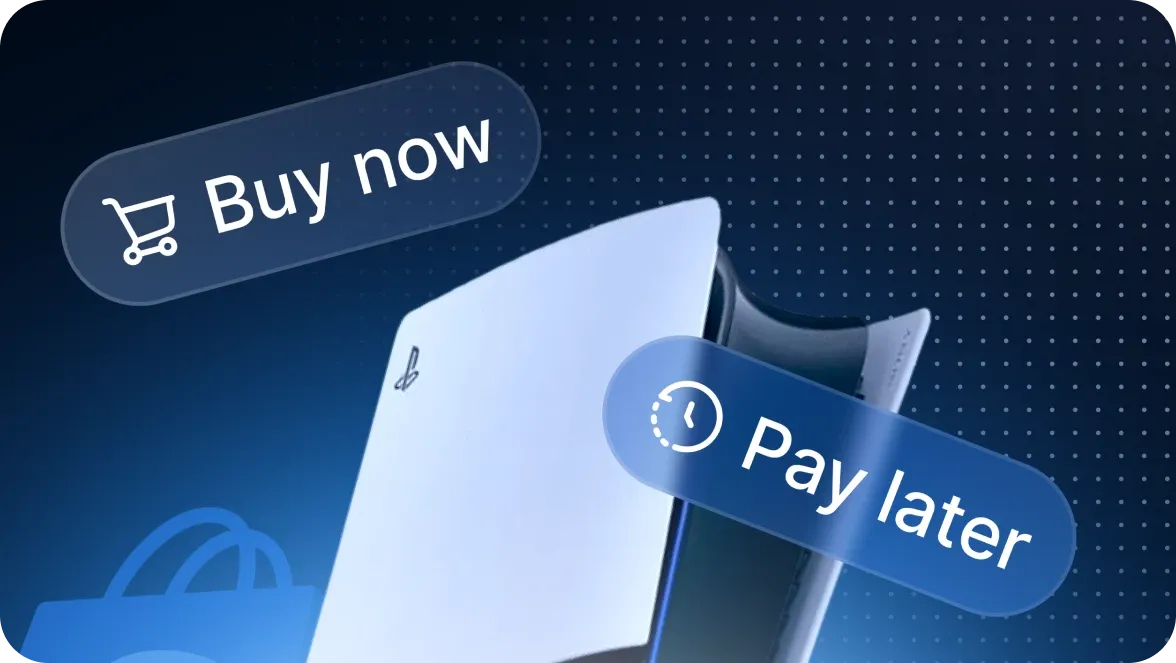
“Hey, Google, I need more coffee.” Seven words that represent a fundamental shift in how commerce works. No browsing, no comparing, no adding to cart. A simple request instead, triggering a complex chain of algorithms, inventory systems, and delivery logistics. And it’s not the technology getting smarter. The thing is – shopping’s getting simpler. Voice commerce changes something that has defined online shopping for decades.
What does it mean for merchants? The leaders won’t be the stores with the flashiest websites or the most Instagram-worthy product photos. They’ll be the businesses that understand how to have conversations with customers. And it includes conversations happening through a smart speaker at 6 AM.
So, how to optimize for voice search? That’s what we’re going to explain.
TL;DR: Make your store more human-oriented
Voice search makes shopping more accessible for people who are multitasking and those struggling with typing.
Voice queries differ from traditional searches. For merchants, it means extra optimization efforts. However, there’s nothing too complicated or interfering with the overall SEO strategy.
The optimization strategies feature using natural, spoken language, structured data, and local context, among other things.
A gradual increase in smart speaker shopping and customers seeking convenience will keep driving the popularity of voice commerce.
The importance of voice search and how it works
Voice search in ecommerce removes friction from other shopping experiences. When people can speak their needs instead of typing, they’re more likely to search while multitasking – cooking, driving, etc. The technology also democratizes access to commerce. Voice search helps people who struggle with typing due to age or disabilities. This creates more shopping touchpoints, expanding when and how purchases happen. How does voice search work in practice? The technology processes spoken requests through three main stages:
- Speech recognition converts your voice into text.
- NLP algorithms analyze the meaning behind your words.
- The system searches for relevant information.
This entire process happens in seconds. However, the complexity underneath is enormous. Algorithms must understand context, location, personal preferences, and conversational nuances.
Voice queries sound nothing like typed searches. They are conversational – longer and more specific. They often include question words rather than being a grammar-independent set of keywords. Voice search for ecommerce also tends to be more local and immediate. Most importantly, it returns fewer results. While a typed search might show dozens of options, voice assistants usually provide one clear answer or a short list of top choices.
Eight effective strategies for voice commerce success
Your customers are already talking to their devices, asking Alexa to reorder detergent or telling Google to find the best deals on running shoes. If you’re not ready to sell through voice, you’re missing out on sales that are happening right now.
And how to optimize your website for voice search? There’s some good news. Getting your store voice-ready doesn’t require a complete overhaul. Here are some proven strategies that will help you quickly optimize for voice search.
#1 Talk the way people do
Let’s start with the basics: how to optimize content for voice search? Imagine someone cooking a dinner, having a hard time with a sticky pan. They’d talk on the phone, asking, “What’s a good non-stick pan under fifty bucks?” rather than “non-stick pan $50.” It means your product descriptions should sound like real-life conversations. They should answer the questions people actually ask. Stuffing keywords in there wouldn’t work – not anymore.
To produce the proper copy, analyze actual customer searches. What do they ask for when looking for items you offer? Is it “durable” or “long-lasting,” “cheap” or “affordable” products? Pick up the language they use and get more human. Offering “comfortable running shoes that won’t fall apart after a few months” is likely to convert better than “premium athletic footwear.”
#2 Use structured data and schema markup
It’ll make it easier for engines to find your stuff. Voice assistants are basically really fast readers. Yet, they need some help figuring out what’s what on your website. Add the right technical markup to make it easier for them. This isn’t just about the technical details but more like organizing your information in a way that makes sense.
We can compare it to putting clear labels on everything in your store. You end up with a really organized digital stockroom. When someone asks about prices or whether something’s in stock, the voice assistant can quickly grab that info and give a helpful answer. And honestly, this organization helps human customers, too.
#3 Audit (and fix) your mobile website
Most people are using their phones for voice searches. That’s another reason to make the mobile experience in your store as smooth as possible. Here’s the thing. Voice search often leads to immediate action. If they land on your mobile site, and it takes forever to load, or the buttons are too small to tap, or the mobile checkout process is a nightmare, they’ll just buy from someone else.
Test your mobile site on actual phones, not just by resizing your desktop browser. Try buying something on your own site while you’re standing in line at the grocery store. If it’s frustrating for you, it’s definitely frustrating for your customers. Speed matters more than nice design when someone’s trying to make a quick purchase. Looking at how to optimize website for voice search, you’ll improve the overall experience for your audience.
#4 Learn from customer reviews
When voice assistants recommend products, they often pull from customer reviews. Those detailed reviews where people explain what they loved or didn’t like about your product? That’s gold. Encourage people to leave reviews. The real ones, honest and sounding like they’re told to a friend, will work best. You can notice that in your personal experience.
Imagine seeing two reviews for the same item. One is concise, “Great product!” The other one is, “I bought this coffee maker because I’m always rushing in the morning, and it’s perfect because it brews fast, and the coffee actually tastes good.” The specific review is more helpful for you. It’s also a better piece of material for a voice assistant to work with.
#5 Get personal with technology
The most appealing aspect of voice commerce is its ability to become incredibly personal. Smart systems learn the preferences of their owners. They notice if a person always buys the same brand of coffee or frequently browses a specific brand of clothing. And when this user asks for recommendations, the system suggests things they’ll actually want.
This is where voice commerce gets really interesting. The technology is getting good enough to pick up on patterns. It’s not only about what people buy. Algorithms analyze when they buy it, how often, and what they tend to buy together. For a customer, it’s like having a personal sales associate. For merchants, it’s an opportunity to target a valuable audience.
#6 Be where your customers are
People are already using smart assistants on a daily basis. They talk to Alexa, Google, and Siri to search for items and recommendations. Aim to integrate your voice search products with these systems. If you do so, customers will be able to browse your catalog without even touching their phones. What’s more important, they’ll be able to check stock and reorder in minutes.
The goal here isn’t to replace your website or app. It is to expand your business capabilities. You’ll give the customers an extra channel to interact with your business. The convenience you offer to voice users is likely to drive their loyalty. Just make sure to account for performance and reliability. Voice interactions set higher expectations for speed and accuracy.
#7 Focus on local searches
Staying relevant to your closest (literally) audience is an excellent way to optimize website for voice search. Many voice queries are made by people looking for nearby businesses. “Where can I buy [something] near me?” may be one of the most common voice searches. And they are often urgent. People tend to search for nearby stores that sell specific products when they need something as fast as possible or worry they can forget to order something later.
Make it all work for you. When someone’s looking for what you sell in your area, be the obvious choice. Ensure your info is accurate and easy to find. Also, pay attention to the lingo. Using the exact language your local customers actually use makes you more likely to show up in their voice searches.
#8 Answer the questions in advance
Yes, before they are even asked. Anticipating issues isn’t beneficial only for crisis management. It also helps optimize site for voice search. Think about all the questions customers ask you – on the phone, via email, in your store. Put those answers on your website where they are easy to find. Write the answers that sound natural. Approach this task like a customer rather than a store owner.
What does it mean, exactly? Formulate both questions and answers that actually solve the problem. Don’t just state the policy. For example, don’t use wording like “What is our return policy?” Instead, try “What if this doesn’t fit?” or “Can I return this if I don’t like it?” Both customers and voice assistants love this kind of complete, helpful answers.
Voice commerce trends shaping the shopping experience
All of the above might leave you disoriented. You clearly need to optimize, but where to start? We’d suggest taking a look at several trends that are shaping voice commerce. Understanding what drives the demand and shift in habits may help you set the priorities. So, here’s what we’ve got:
Smart speaker shopping is becoming routine. Over 38 million Americans use their smart speakers for shopping on a regular basis.
Weekly shopping habits are forming. 23% of global consumers use voice-activated smart assistants to make regular purchases rather than just occasional orders.
Voice is part of the research process. 51% of voice shoppers use voice assistants to research products before buying, not just for impulse purchases.
The smart home creates a shopping gateway. Starting with simple devices like smart bulbs leads to expanded voice-controlled purchases throughout the home.
Market growth is accelerating. Voice search ecommerce is projected for significant growth with expanding global adoption.
Device ecosystems are quickly expanding. Smart speakers aren’t the only gadgets that enable voice shopping. Voice assistants appear across more devices.
Convenience drives preference shifts. Voice users increasingly prefer online shopping to in-store experiences. Speed and efficiency are the main reasons for this. Meanwhile, AI integration is improving interactions. Advanced models make voice shopping conversations more natural and contextual than basic commands.
These trends show voice commerce moving from experimental to essential. It transforms all stages of the ecommerce cycle. It affects how people discover, research, and purchase products across multiple touchpoints.
Conclusions
We’re moving toward a world where commerce happens in conversations, not clicks. Instead of asking, “What is voice commerce?” businesses move to the next one: “How to optimise for voice search?”
Voice commerce rewards authenticity, conversation, and genuine helpfulness over large teams and available resources. In other words, businesses that succeed in voice commerce won’t be the ones with the biggest advertising budgets or the most sophisticated technology. Companies that understand how to be genuinely useful when customers need them most will gain the advantage.
If you’re ready to embrace the change, contact our team. We can help you handle the technical details.
Frequently asked questions
What types of customers use voice commerce most?
The voice commerce customer base is surprisingly diverse. Yet, there are certain behavioral patterns. Younger shoppers – millennials and Gen Z – are more likely to use voice shopping for the convenience it offers. As for the devices, those are mostly mobile users.
How do voice assistants choose which products to recommend?
They consider a combination of factors. Those can include user histories, preferences, and habits, as well as other details shared with the apps. Location, price preferences, product ratings, and brand relationships can also be a part of the algorithm. Sometimes, voice assistants can prioritize the products that come from their own brand.
How do I optimize my product listings for voice search?
Start with learning the difference between SEO and voice requests. While the primer are focused on short queries, the latter model speech patterns. Hence, brands need to optimize for long-tail keywords. It’s also good to include question-based content on your pages. Include local and brand data. Finally, use natural language – write as people speak in everyday life.
Do I need special software or tools to make my store voice-commerce-ready?
For the greater part, voice commerce optimization doesn’t require any specific software. You can make most improvements using your usual tools. Those include Google Search Console, schema markup, and local SEO tools. The most important “tool” is understanding how voice search works.
Is voice commerce worth investing in for small businesses?
It all depends on your priorities. Voice search optimization requires a low initial investment. Meanwhile, it comes with an early adopter benefit, targeting a specific user segment, and heavily favors local businesses. Businesses selling consumable products and frequently ordered items tend to see the best results when it comes to voice search adoption







































Was this helpful?
0
No comments yet